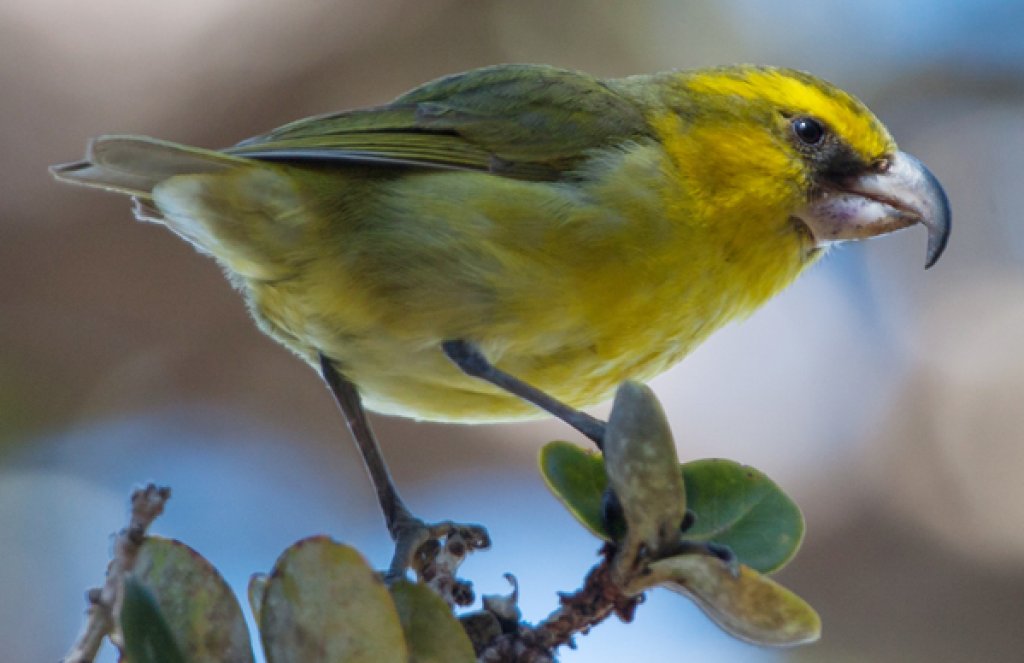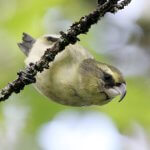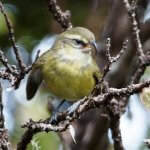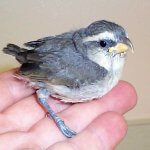About the Kiwikiu
The Kiwikiu, also known as the Maui Parrotbill, is so rare that it had no Hawaiian name, or that name was lost over time. This hook-billed, olive-green and yellow native honeycreeper was considered extinct during the first half of the 1900s, until it was rediscovered in 1950. In 2010, to celebrate its heritage and survival, the Hawaiian Language Lexicon Committee gave Maui Parrotbill the name Kiwikiu in ‘Ōlelo Hawaiʻi (Hawaiian language) in a mele inoa, or naming chant.
Once widespread on the islands of Maui and Moloka‘i, the Kiwikiu has disappeared from most of its former range, much as the ‘Akikiki is now gone from most of Kaua‘i and the ‘I‘iwi from across most of the state.
Tiny Terrors
The Kiwikiu and most other Hawaiian honeycreepers have no immunity to introduced avian malaria, which is transmitted by non-native mosquitoes. This disease is nearly always fatal to honeycreepers; just a single bite by a malaria-infected mosquito is deadly to some species.
Mosquitoes first arrived to the Hawaiian archipelago in 1826, and malaria was established there by the early 1900s. That one-two punch devastated Hawai‘i's native birds. Some went extinct, and some, including the Kiwikiu, retreated to habitats at elevations above the mosquito zone. But climate change is rapidly exacerbating the mosquito threat, as warming temperatures allow mosquitoes and disease to move higher, into the remaining forest birds' mountain strongholds.
Songs and Sounds
The Kiwikiu's song, heard as the bird slowly forages in native-forest understory, is a series of paired notes: chewy-chewy-chewy.
Listen here:
Breeding and Feeding
Multi-purpose Mandibles
The Kiwikiu's heavy, parrotlike bill comprises a long, decurved upper mandible and a shorter lower mandible with a chisel-like tip. Like the bill of the ʻAkiapōlāʻau, another native honeycreeper, the Kiwikiu's bill serves as a multi-purpose tool. This versatile feature allows Kiwikiu to split and chisel open dead wood and branches, pry up bark and lichens, and slice open fruit — all in search of insects and their larvae, which make up most of this bird's diet. The Kiwikiu also probes native flowers for nectar.
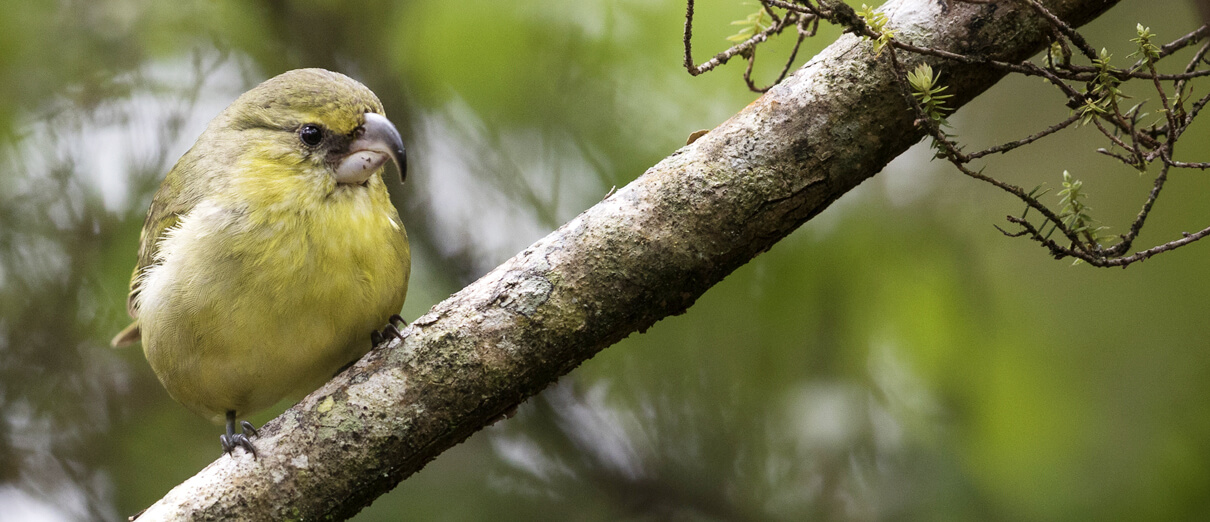
This species is one of the most sexually dimorphic of Hawaiian honeycreepers. Male Kiwikiu are noticeably larger than females, with brighter yellow plumage. Kiwikiu form pair bonds that last for life. This is a long-lived species — birds have been recorded as old as 16 years.
Kiwikiu reproduce slowly, only hatching a single chick every year or two. The young, which the parents feed via regurgitation, also mature slowly, remaining with their parents from five months to nearly a year and a half while learning to successfully forage.
Region and Range
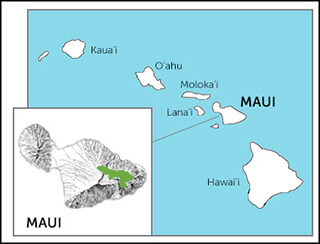
The Kiwikiu's tiny population is now confined to an area totaling fewer than 11 square miles of remote, high-elevation rainforest on the north and east slopes, or windward side, of Haleakalā, Maui.
Conservation of the Kiwikiu
Like the Palila, the Puaiohi, and other native forest birds, the Kiwikiu is primarily threatened by non-native species, habitat loss and alteration, and climate change. Widespread deforestation for agriculture and livestock grazing have reduced forest cover on the island of Maui to a fraction of former levels, while invasive plant and animal species have further degraded the quality of the remaining native forest throughout the island.

Help support ABC's conservation mission!
Saving the Kiwikiu is one of the top priorities of ABC's Hawai‘i Program. In 2019, working with partners including the Hawaiʻi Department of Forestry and Wildlife, Maui Forest Bird Recovery Project, U.S. Fish and Wildlife Service, San Diego Zoo Global, and National Fish and Wildlife Foundation, we translocated Kiwikiu to newly restored forest on the southwestern slope of Haleakalā.
Unfortunately, despite careful planning, the attempt to establish a new population failed: The translocated birds died from avian malaria associated with an unexpected mosquito irruption at the release site. Undeterred, ABC is taking a leadership role with the Birds, Not Mosquitoes partnership to develop and implement a biotechnical solution to suppress mosquito populations in Hawaiʻi, with the aim of halting the spread of avian diseases and future bird extinctions.
Get Involved
Policies enacted by the U.S. Congress and federal agencies have a huge impact on Hawai'i's birds. You can help shape these rules for the better by telling lawmakers to prioritize birds, bird habitat, and bird-friendly measures. To get started, visit ABC's Action Center.
Our Hawaiian partners frequently need help with habitat restoration and other projects benefiting birds. If you live in or will be visiting Hawai'i and would like to volunteer, check the following Facebook accounts for opportunities: Kaua'i Forest Bird Recovery Project, Maui Forest Bird Recovery Project, and Mauna Kea Forest Restoration Project.
American Bird Conservancy and local partners are restoring forests, protecting critical habitat, and much more to save native Hawaiian birds. This is a monumental undertaking, requiring the support of many, and you can help by making a gift today.





































